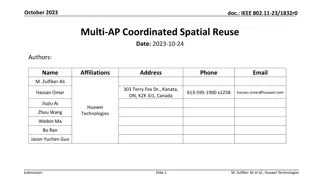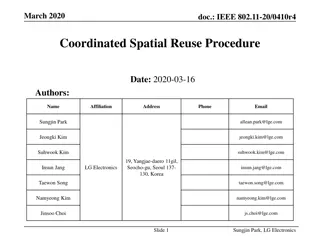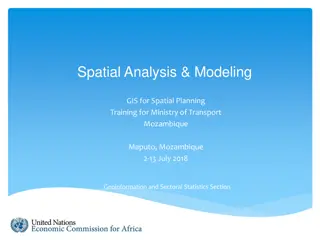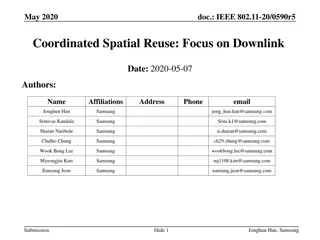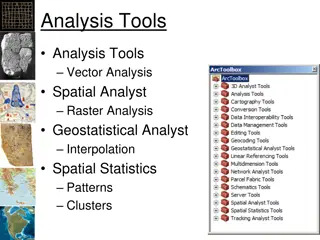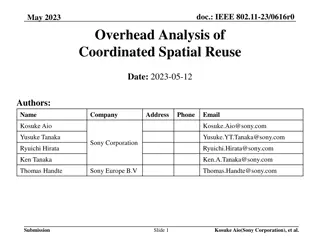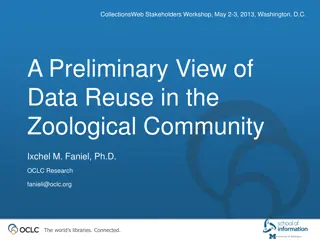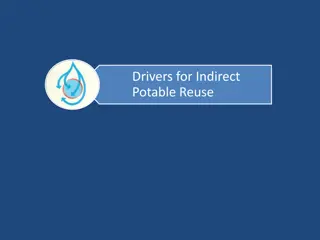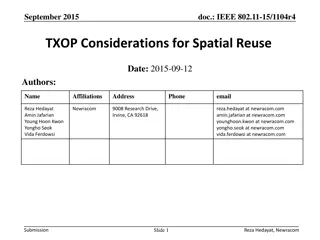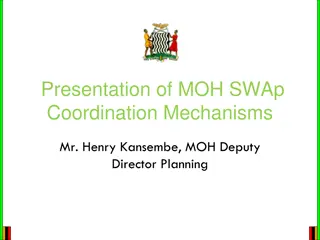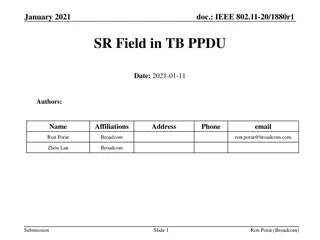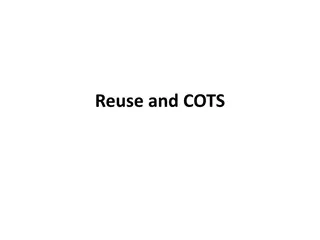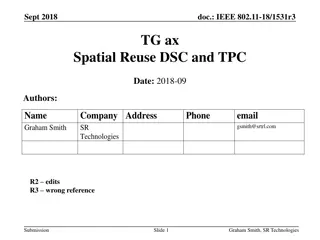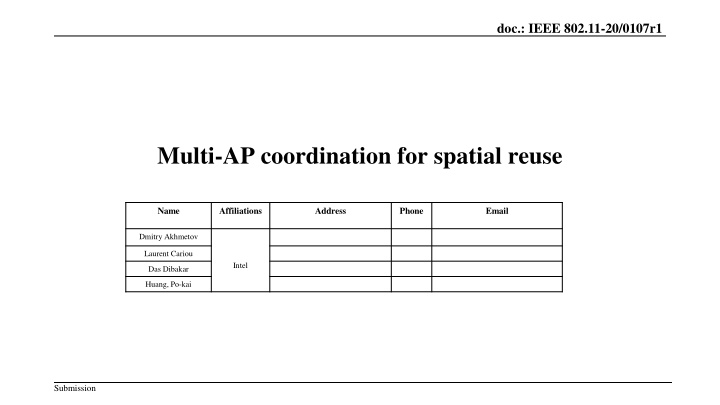
Multi-AP Coordination Techniques for Smart Medium Use
Explore the innovative Coordinated Spatial Reuse (C-SR) technique in IEEE 802.11 standard for Multi-AP coordination, focusing on resource allocation and efficient transmission strategies. The proposed method involves OTA synchronization between Access Points, improving spatial reuse efficiency through intelligent allocation of resources and transmission coordination among neighboring APs and STAs.
Download Presentation

Please find below an Image/Link to download the presentation.
The content on the website is provided AS IS for your information and personal use only. It may not be sold, licensed, or shared on other websites without obtaining consent from the author. If you encounter any issues during the download, it is possible that the publisher has removed the file from their server.
You are allowed to download the files provided on this website for personal or commercial use, subject to the condition that they are used lawfully. All files are the property of their respective owners.
The content on the website is provided AS IS for your information and personal use only. It may not be sold, licensed, or shared on other websites without obtaining consent from the author.
E N D
Presentation Transcript
doc.: IEEE 802.11-20/0107r1 Multi-AP coordination for spatial reuse Name Affiliations Address Phone Email Dmitry Akhmetov Laurent Cariou Intel Das Dibakar Huang, Po-kai Submission
doc.: IEEE 802.11-20/0107r1 Problem Statement We see a growing interest in smart medium use with Multi-AP coordination techniques like COFDMA, CBF and JT The goal of this presentation is to explore another one possible mode of Multi-AP coordination. C-SR or Coordinated spatial reuse where resources allocated to 2 APs Submission 2
doc.: IEEE 802.11-20/0107r1 Spatial reuse to the rescue We propose to use OTA sync between APs to announce upcoming transmission Announce SR-TXOP to transmit together with neighboring APs to SR-capable STAs For simplicity we use A-SR for Announced Spatial-Reuse frame (we can also use AP-A-SR to underline that it is done between APs) STA 4.1 STA1.2 STA1.3 STA 4.3 AP1 AP4 STA 4.2 STA1.1 AP2 STA2.1 STA2.2 STA2.3 Submission
doc.: IEEE 802.11-20/0107r1 Detailed Flow of Operation 80 MHz Spatial reuse Spatial reuse AP1 to STA1.1 AP2 to STA2.2 AP1 A-SR (TX power limitations, RSSI, duration, type) STA1.1 to AP1 STA2.2 to AP2 sifs sifs Preamble from AP1 AP2 AP4 Step 3 Step 1 Step 2 STA1.1 Step 1: AP1 A-SR frame contains description of an upcoming transmission, for example TX power constraints/acceptable RSSI Planned TXOP/DL/UL duration TX type (DL or UL) Step 2: AP1 and AP2 transmit to their selected STAs Step 3: STAs respond with Acknowledgement Note: AP2 shall not exceed announced TX duration but may end their TX earlier. Note: AP2 may start its transmission later than AP1, but shall align TX end time STA2.3 AP1 STA 4.3 STA 4.1 STA2.2 AP2 AP4 AP3 STA 4.2 STA3.1 Submission
doc.: IEEE 802.11-20/0107r1 Identification of SR-enabled STAs and APs Learning phase (LP) (ongoing): STA 3 STA1 STA2 APs learn from/survey its STAs for RSSI levels from surrounding BSSes (Aps) APs analyze/record RSSI from other APs Use/Announcement phase AP1 choose STA1 for Tx AP1 calculate how much interference STA1 can accept when using own TX power, MCS and STA1/AP1 PHY capabilities AP1 to AP2 RSSI derive which AP (AP2)can be selected for SR announcement as well as TX restrictions for other AP Contention winner (AP1) construct A-SR frame which include AP1 AP2 TX power restrictions for AP2 Acceptable level of interference for AP1 STA 4 Duration Direction\transmission type Upon reception of A-SR frame AP2 Select own STA2 for transmission taking into account a) TX power constraints b) RSSI at STA2 from AP1 to make sure STA2 transmission won t affect AP1 RX process 5 Submission
doc.: IEEE 802.11-20/0107r1 Simulation setup 1-4 APs considered with following topologies: 3 AP 2 AP Config 1 2 AP Config 2 1 AP We study three cases Complete control C-SR EDCA STAs randomly dropped in a building 4 STAs per AP Building with 2 floors , 6 rooms per florr, room size 5x5x3 meters Results averaged over multiple topologies 4 AP Submission Slide 6
doc.: IEEE 802.11-20/0107r1 Simulation setup Scheduling algorithm for Complete Coordination scheme: Select an AP for transmission with equal probability among all APs Inside the selected AP, use RR to select a STA the first active link. Select a second active link (that achieves <= 10% PER) for concurrent transmission (if any) such that doing so still allows 1st active link to achieve <= 10% PER. Consider both sharing the entire 80 MHz channel and sharing separate 40 MHz channel modes. Second active link allowed to reduce Tx power from 15dBm to 0 dBm in steps of 1 dB. By analyzing all links from other Aps to their STAs pick one that has highest total (over first and second links) throughput. Scheduling algorithm for Announced Spatial Reuse scheme: use RR to select first active link from an AP that wins contention Identify SR-enable AP Identify SR-enabled link within SR-enabled AP. Scheduling algorithm for baseline (EDCA): Use RR to select a downlink STA. Submission Slide 7
doc.: IEEE 802.11-20/0107r1 Simulation result C-SR provides comparable performance as Complete Control Higher spatial reuse opportunity as number of APs increase Submission Slide 8
doc.: IEEE 802.11-20/0107r1 Comparison with 11ax SR 2 floor residential complex. All APs in ground floor. 15m AP 10m Compared to 11ax SR, about 40% gain in 90-tile throughput Submission Slide 9
doc.: IEEE 802.11-20/0107r1 Comparison with 11ax SR (Config 2) 2 floor residential complex. All APs in ground floor. 20m AP 10m Lesser gain compared to Config 1 => gains are dependent on scenarios as in 11ax SR Submission Slide 10
doc.: IEEE 802.11-20/0107r1 Straw poll Do you agree to add support of Coordinated Spatial Reuse in 11be multi-AP system? Submission 11
doc.: IEEE 802.11-20/0107r1 Backup (spatial reuse) Ratio of successful SR-enabled operations (transmission) to total number of transmission Submission 12

